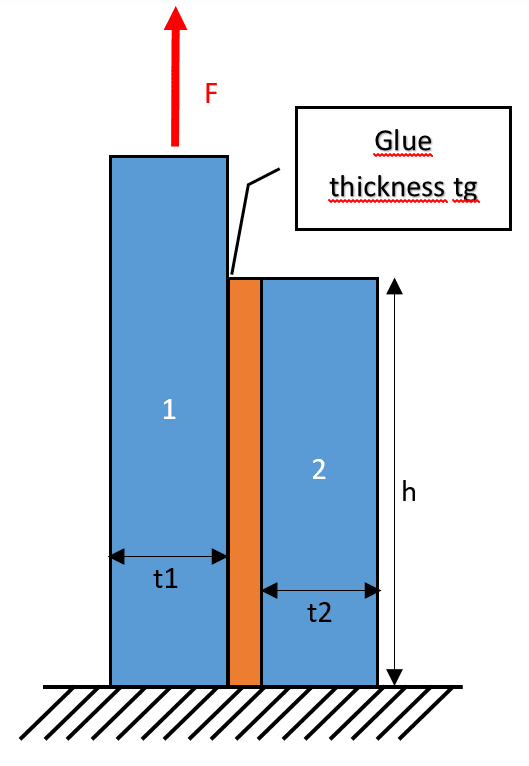DanielNeubauer
Mechanical
Hello everyone,
i'm new to this forum and seek help regarding a problem I had in my project where I cant seem to find the right method to tackle it.
I need a way to compute the following: a plate with thickness t1, width w and elastic modulus E1 is loaded in-plane with the force F. it is supported on it's side by another plate with respective thickness t2, same width w and elastic modulus E2 over the height h.
the connection of both is achieved by an adhesive with thickness tg, elastic modulus Eg and shear modulus Gg.
how to calculate maximum shear stress in the adhesive? any bending, peel stress or nonlinearities in the adhesive can be disregarded for now.
please see the attached figure for further clarification.

any advice is highly appreciated!
kind regards
Daniel
i'm new to this forum and seek help regarding a problem I had in my project where I cant seem to find the right method to tackle it.
I need a way to compute the following: a plate with thickness t1, width w and elastic modulus E1 is loaded in-plane with the force F. it is supported on it's side by another plate with respective thickness t2, same width w and elastic modulus E2 over the height h.
the connection of both is achieved by an adhesive with thickness tg, elastic modulus Eg and shear modulus Gg.
how to calculate maximum shear stress in the adhesive? any bending, peel stress or nonlinearities in the adhesive can be disregarded for now.
please see the attached figure for further clarification.

any advice is highly appreciated!
kind regards
Daniel
